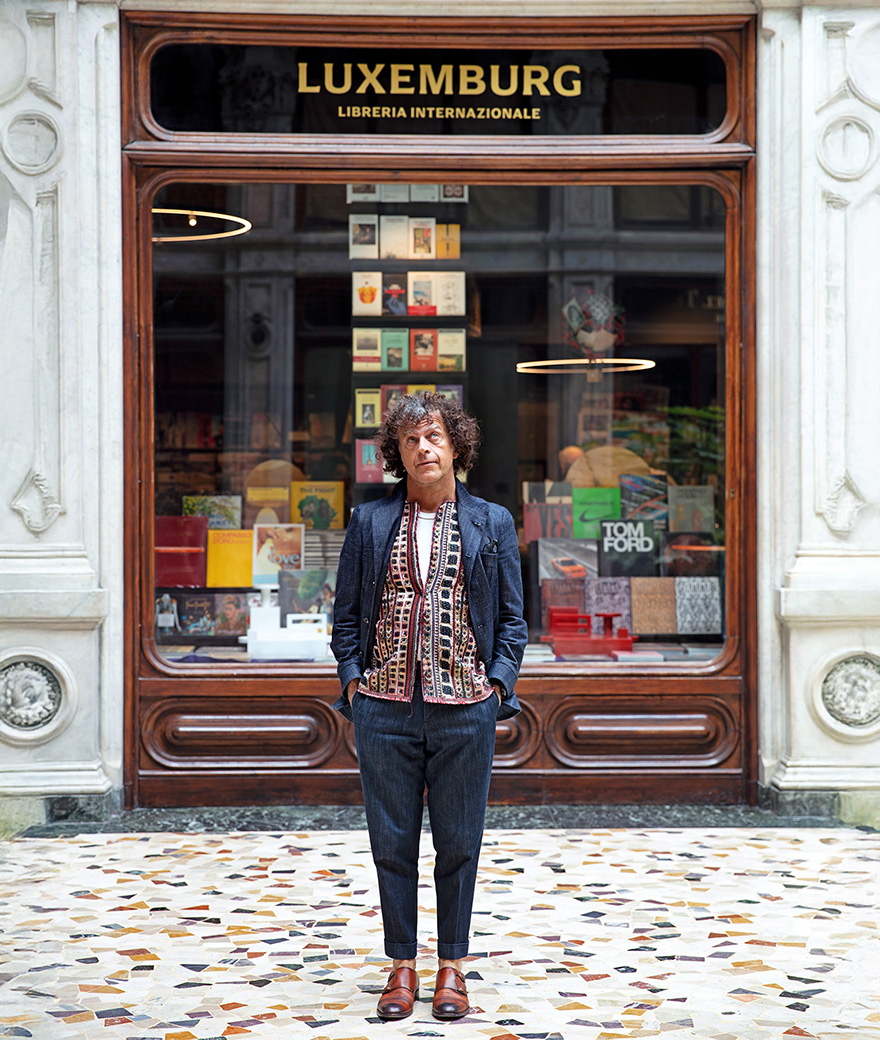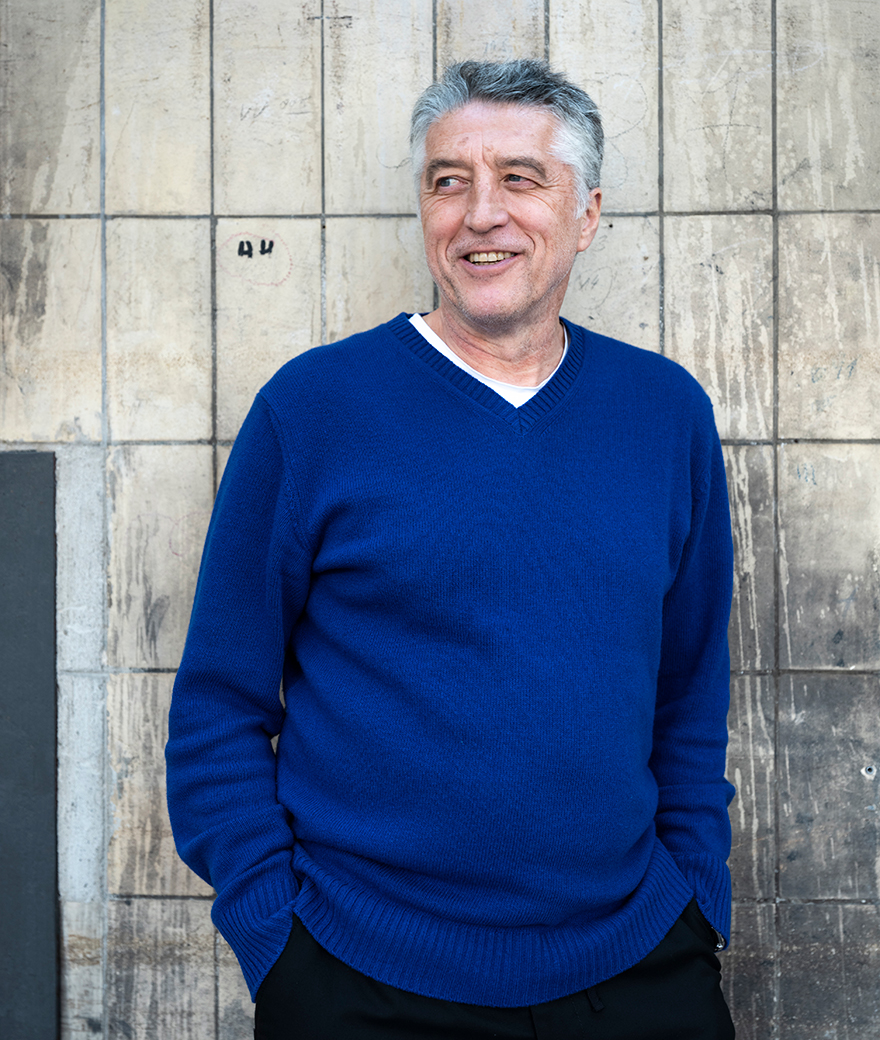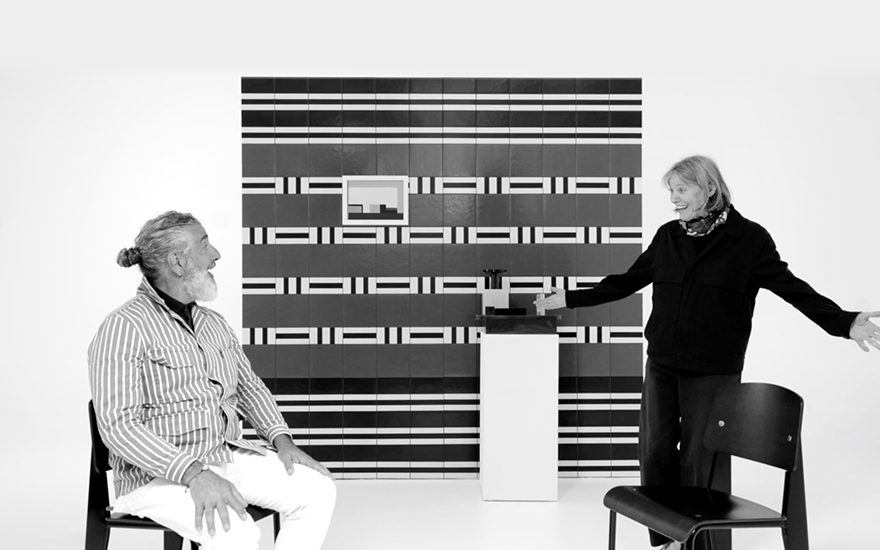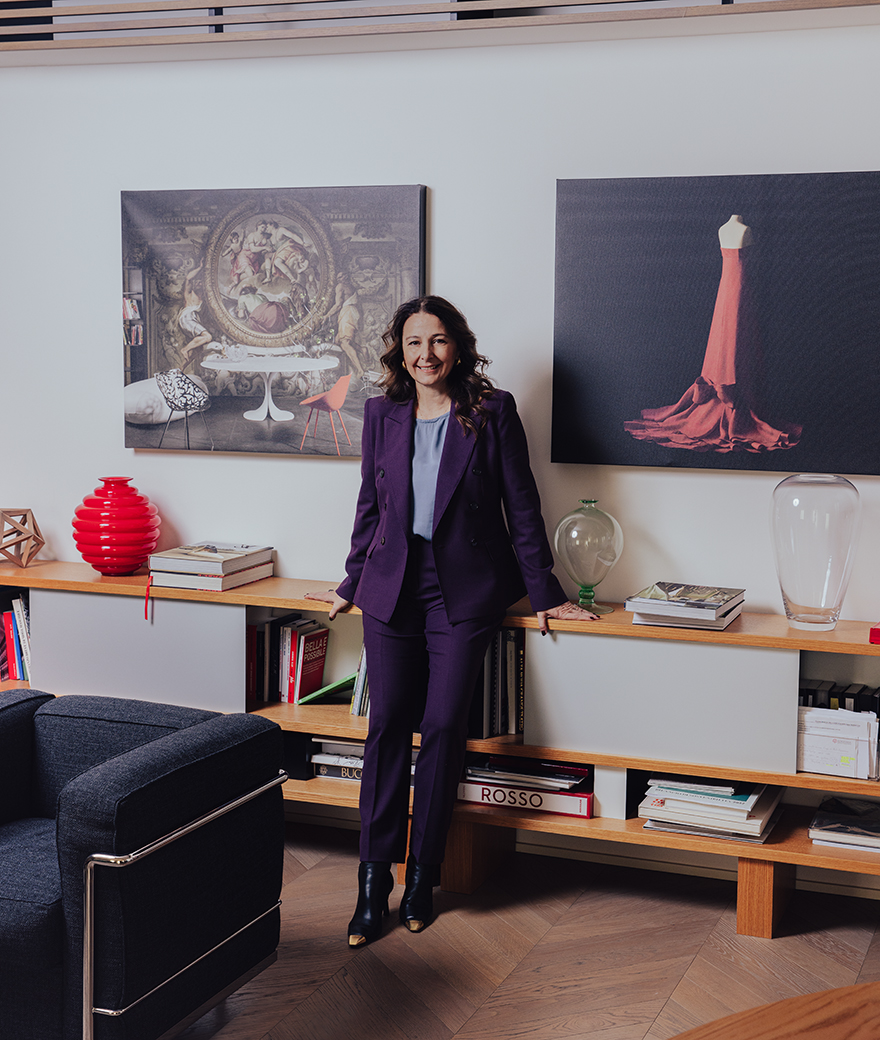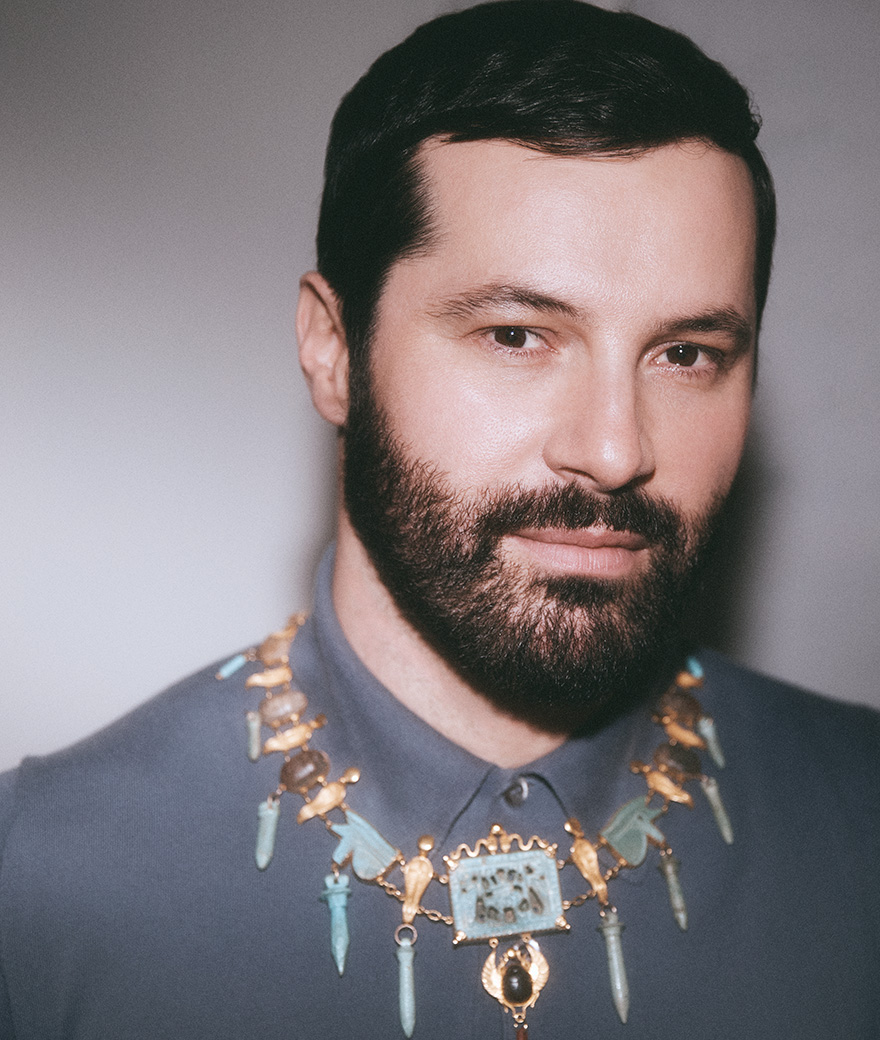A talk with Milan Ther
Milan Ther is the director of the Kunstverein in Hamburg and curator of the exhibition Bühnenbilder, dedicated to Silke Otto-Knapp. We met him to discuss his curatorial choices, the artist on show, and the work realised for her exhibition at Casa Mutina in 2022.
Mutina fondly remembers the artist who passed away prematurely.
What did you see in Silke Otto-Knapp that led you to choose her for this exhibition? What strikes you the most about her works?
Silke Otto-Knapp’s oeuvre gives body to a type of art making in which the witnessing and translating of culture becomes a narrative about how Otto-Knapp’s work itself is made. The historical perspectives that flow into the paintings tell a similar story in performing arts, from classical modern dance and theatre—Degas onwards, to late-modern and postmodern practices like those of Anna Halprin and Trisha Brown, to the contemporary where the British choreographer Michael Clark figures centrally in Otto-Knapp’s later series. Otto-Knapp prepared the canvases by repeatedly spraying and moving around watercolour pigment, like a form of rehearsal or practice, building up the surface only for the work to go on then to perform as a painting in its finished state.
The exhibition title (Bühnenbilder, “scenographies”) seems to evoke the connection established by the artist between painting, space, and performance. How do these elements interact with each other in the Hamburg exhibition?
Bühnenbild in German literally translates into “stage image” or “stage painting”, but is the term used for scenography. For the exhibition at the Kunstverein in Hamburg, Otto-Knapp and I discussed using the columns of the space, adding more, and working with them to make the paintings appear bodily. All work is hung frontally towards the exhibition room entrance door. Upon entering the space and moving throughout, the paintings appear to move for each other, but the frontality also engenders a kind of fourth wall that viewers can navigate. The orange lighting of the space touches on the artifice in Otto-Knapp’s work that stages are places of the mind first (and also of life).
For her exhibition at Casa Mutina in 2022, the artist created a work directly painted on Mutina ceramic tiles. How do you value her intervention? What role does the fragmentation of the support play within the work?
The work—which takes its motif from Rainer Werner Fassbinder’s Beware of the Holy Whore (1971), which was reinterpreted by Michael Laub for the play Fassbinder, Faust and the Animists in 2017—is in dialogue with the Versammlung (2022) series that was made for the exhibition at the Kunstverein. In different ways, all works in this series negotiate the idea of gathering on stage. In the case of Fassbinder’s film, which revolves around the anarchy that can take place on a film set, actors in the movie stopping and resuming the shoot, the two tableaus that Otto-Knapp has interpreted from the film depict actors acting as if they are not acting, a kind of performed pure presence on stage. Within the exhibition Bühnenbilder, the formats of the work move from smaller paintings to larger multi-panel works, to the freestanding screens Versammlung, to the tiled commission by Mutina. Within this trajectory, the paintings “act” and “perform” their objecthood in relation to the exhibition space differently – in the earlier works, figuration is technically more elaborate, while the paintings undergo a reduction of information as they increase in scale, leaving little more than the bodies of the performers to signify presence, choreography, and the space of the stage.
What is your relationship with ceramics? What do you think are its most interesting applications in the artistic field?
Personally, I have always felt drawn to ceramics’ ability to maintain colour over centuries. The Italian majolica tradition from the 15th and 16th centuries, with its beautiful yellow, blue, and green pigment, comes to mind. In that sense, it is a medium that can offer one of the best impressions of what the past would have looked like. It is also a way in which earth and stone enter our living environments. There is a simple and unmediated beauty to hand-painted and glazed tiles.
How has your professional role evolved over the years? What does Kunstverein Hamburg’s director role require from you today?
As you move through institutions, you realise how speaking in different spaces changes the way you work. Those spaces are defined by audiences (the Kunstverein model brings with it a highly art-literate audience), finances, geography, and history, and one of the opportunities that institutional work offers is to respond to these factors (and others) over a number of years.
What role does Kunstverein Hamburg play in the national and international art scene? In what direction is the curatorial research you are advancing?
The Kunstverein is over 200 years old and uniquely situated in Hamburg to commission work and produce research-based exhibitions. As Europe’s role in the world changes, I am interested in understanding recent historical formations and situating contemporary art and aesthetic practice within them.
“Upon entering the space and moving throughout, the paintings appear to move for each other, but the frontality also engenders a kind of fourth wall that viewers can navigate. The orange lighting of the space touches on the artifice in Otto-Knapp’s work that stages are places of the mind first (and also of life).”

